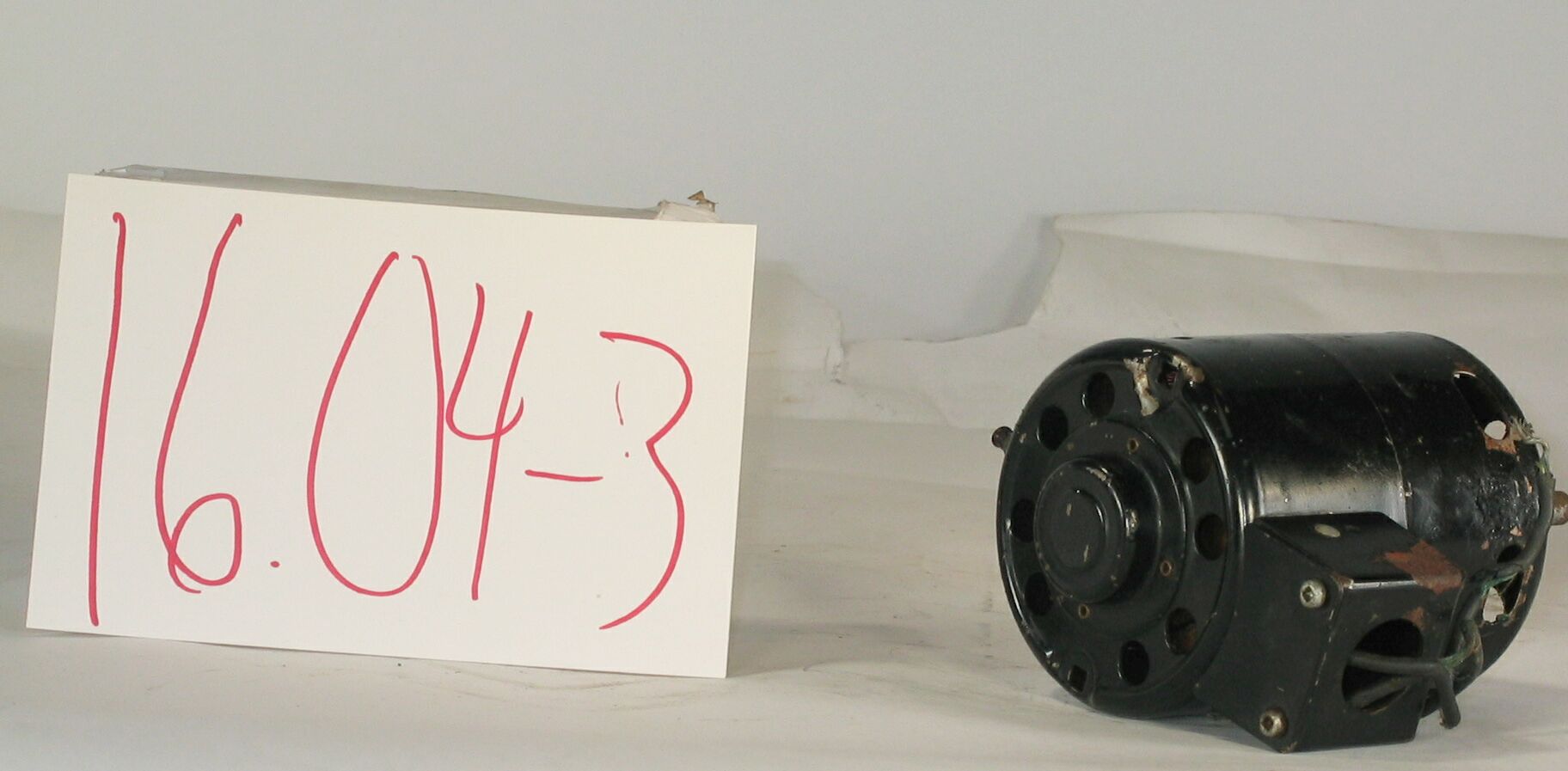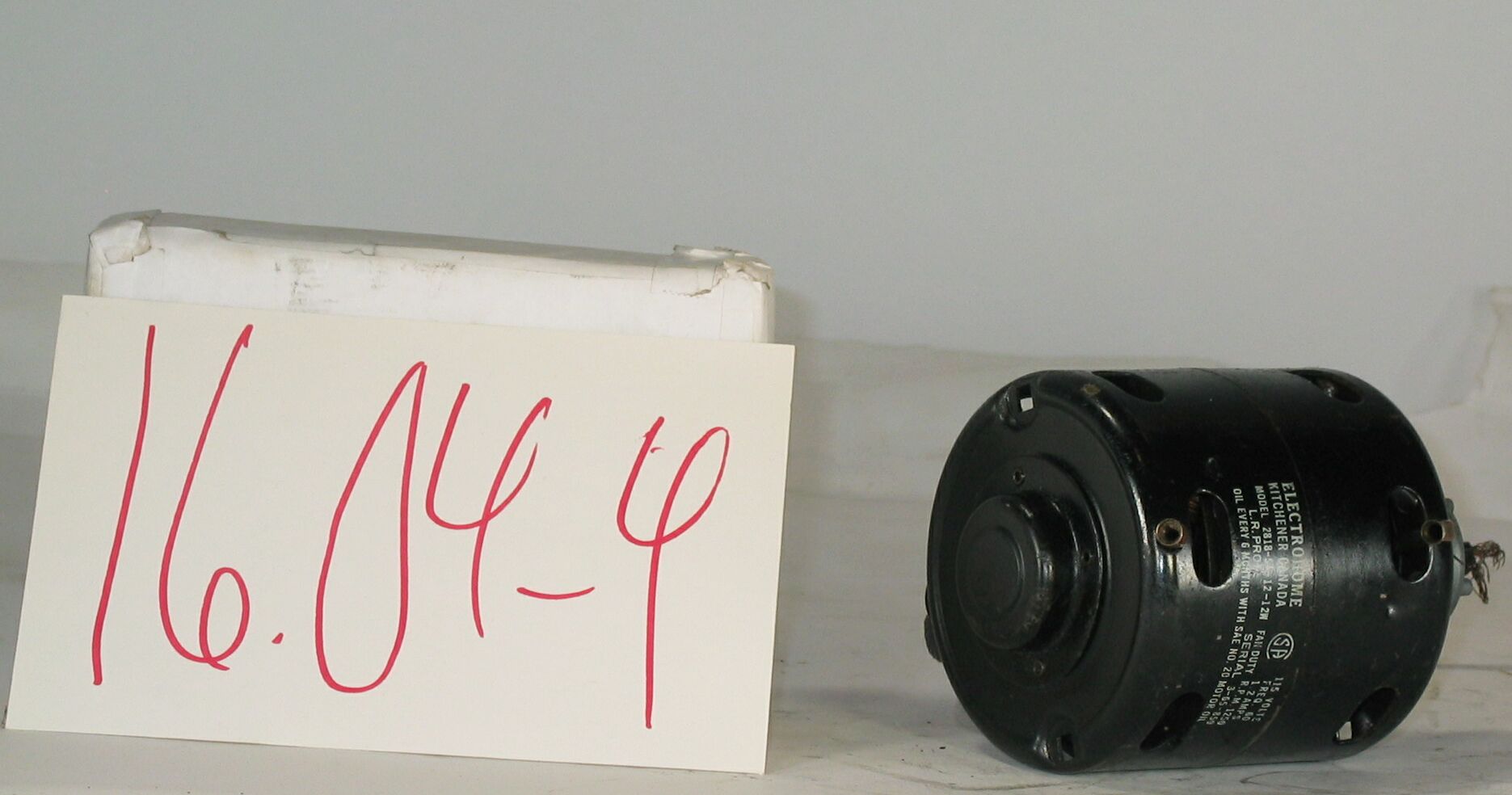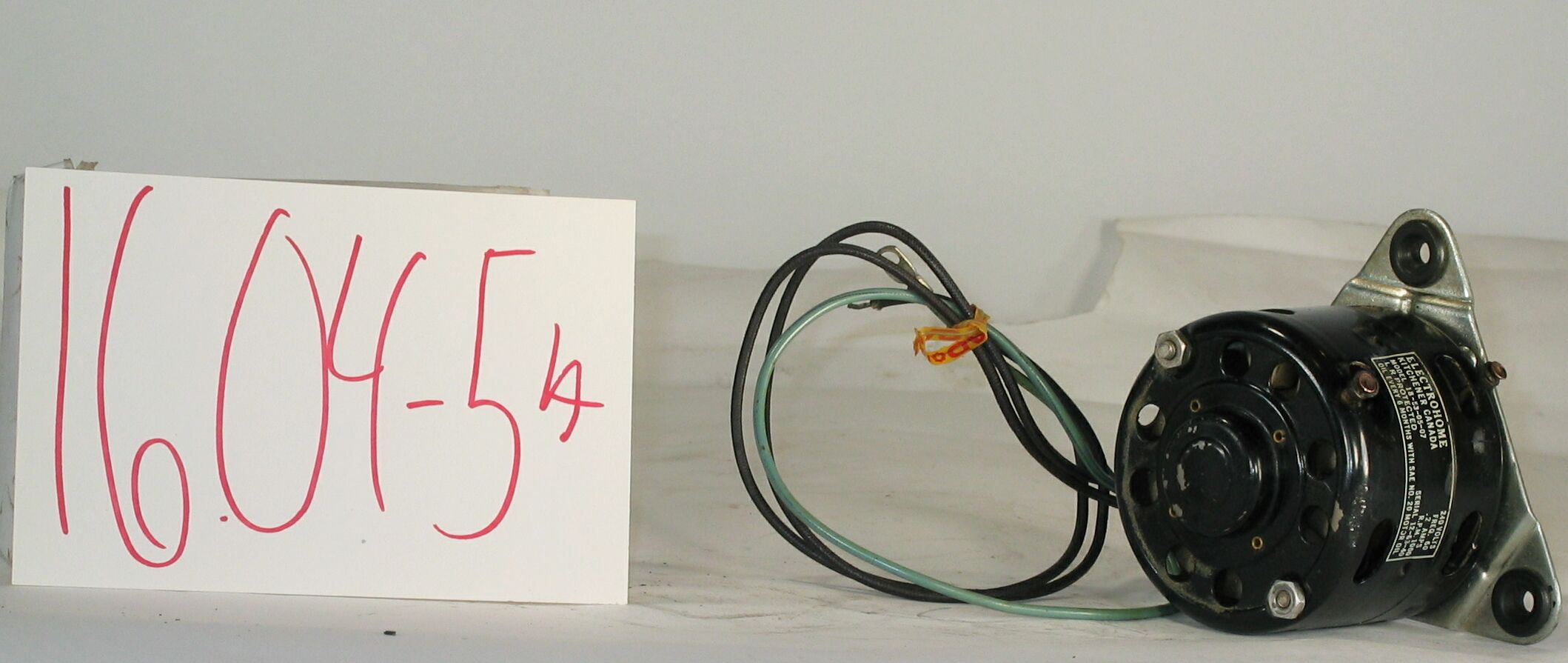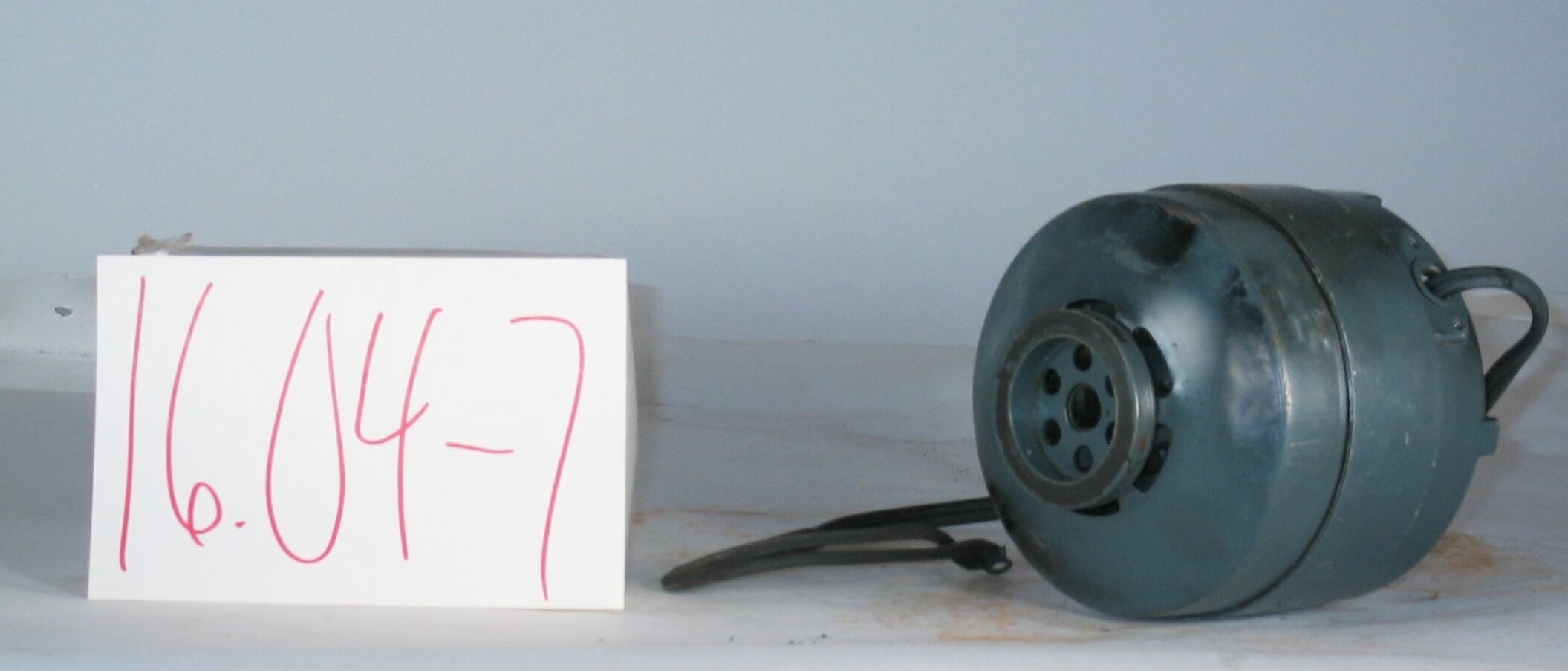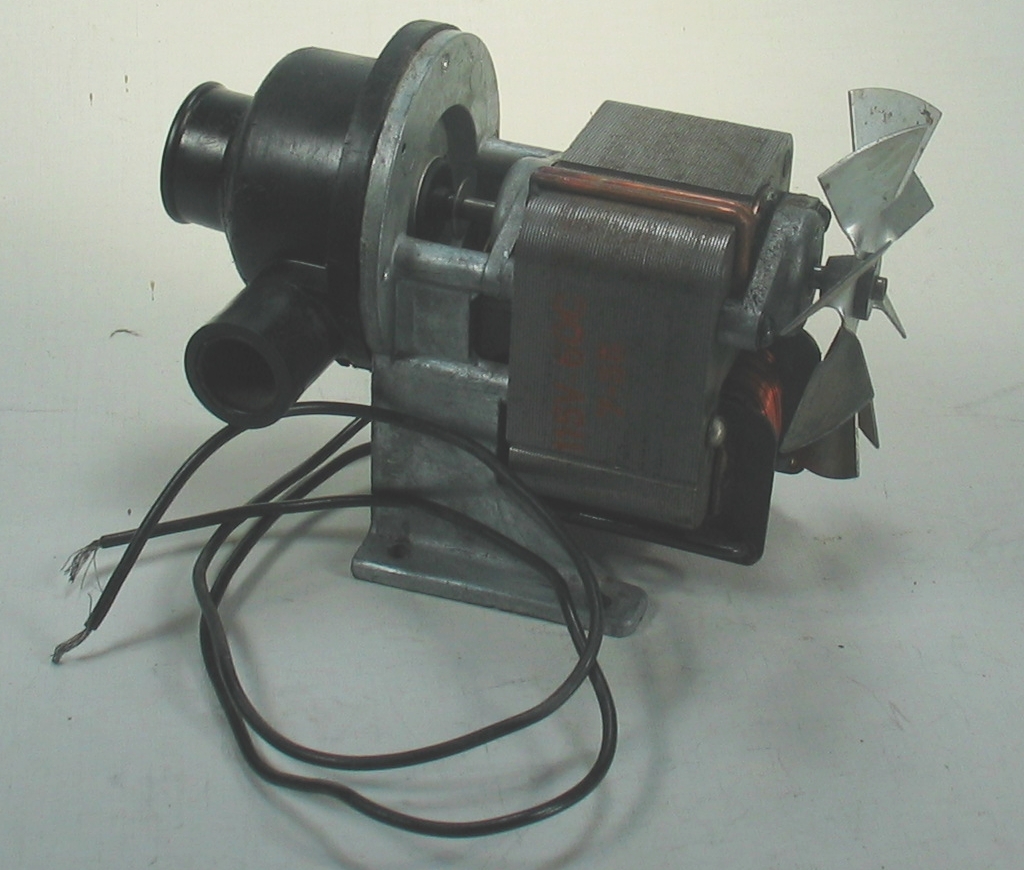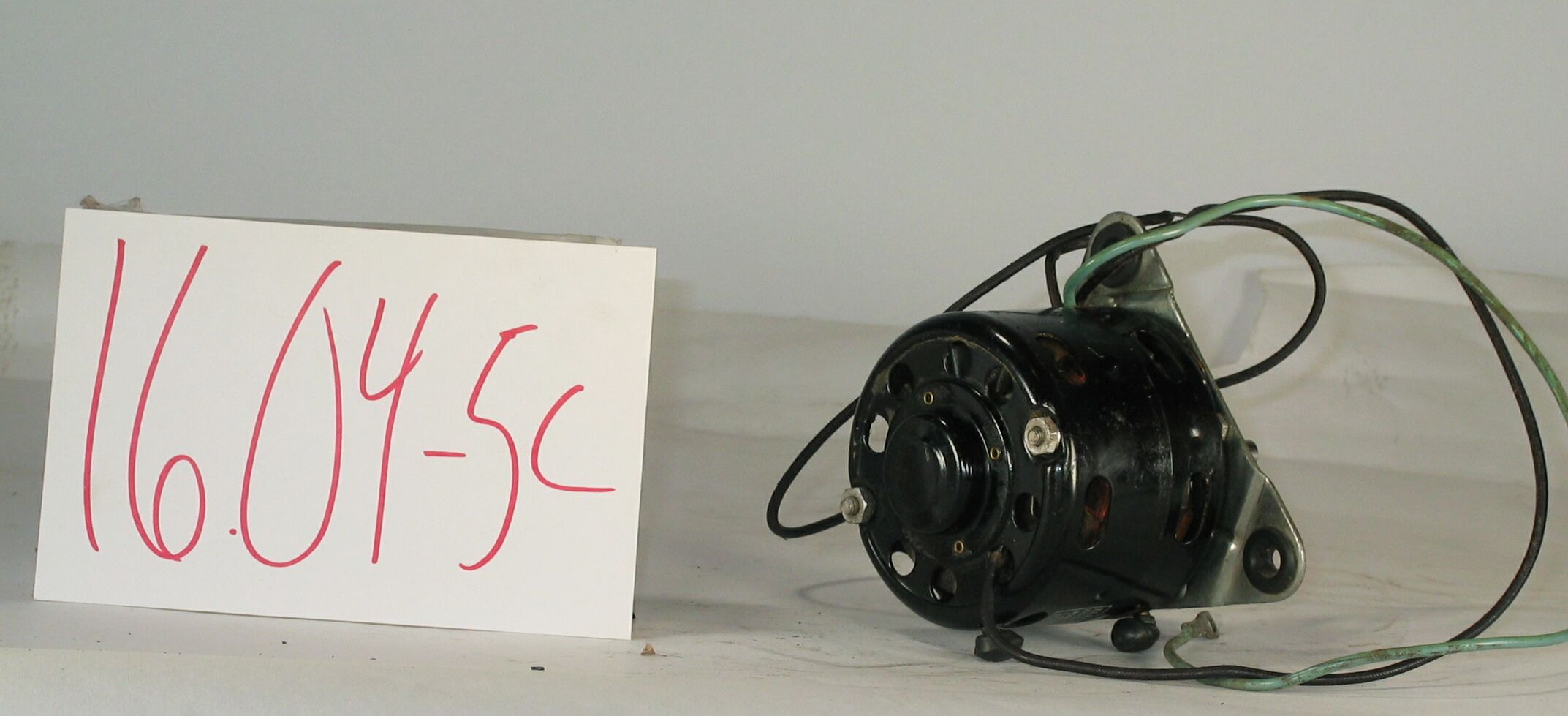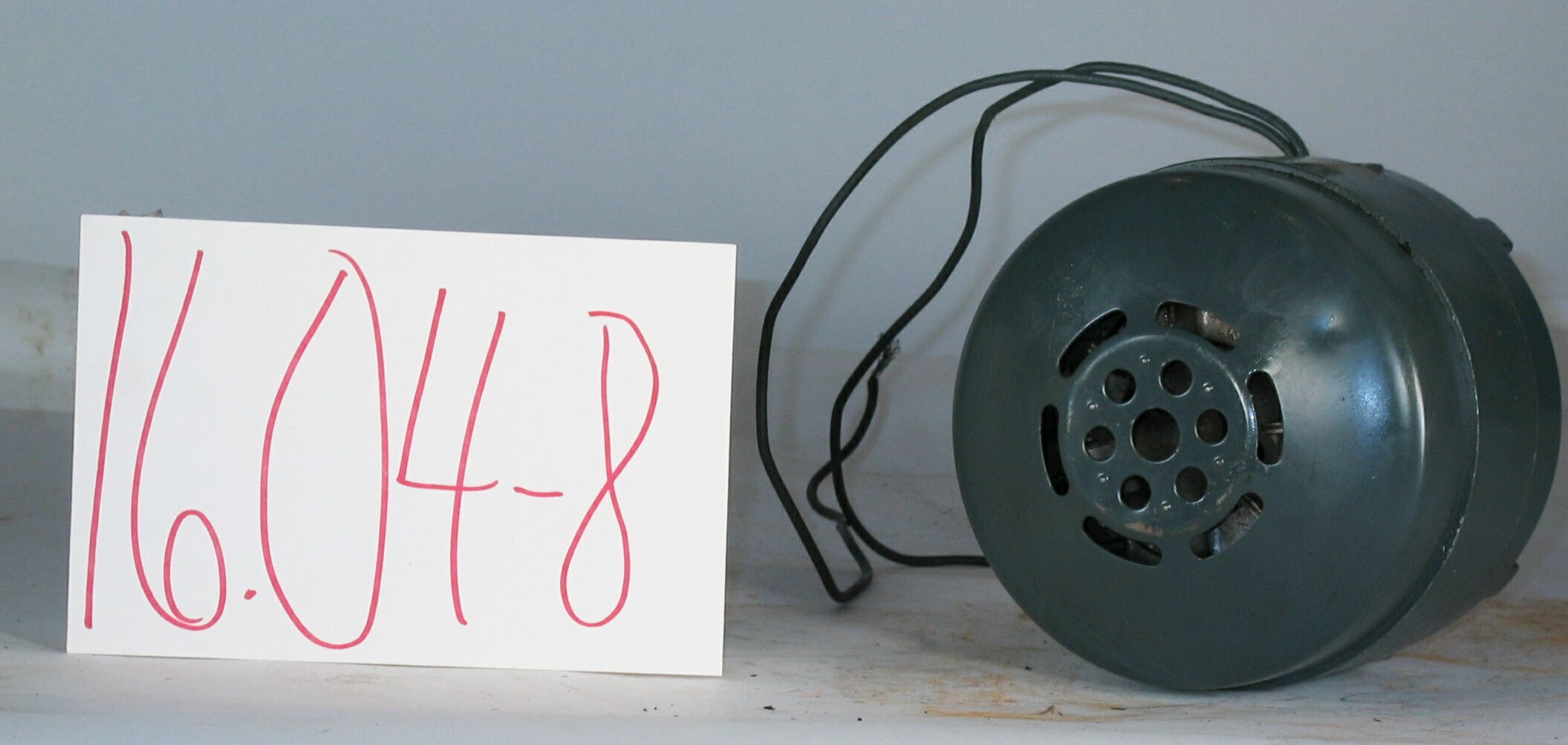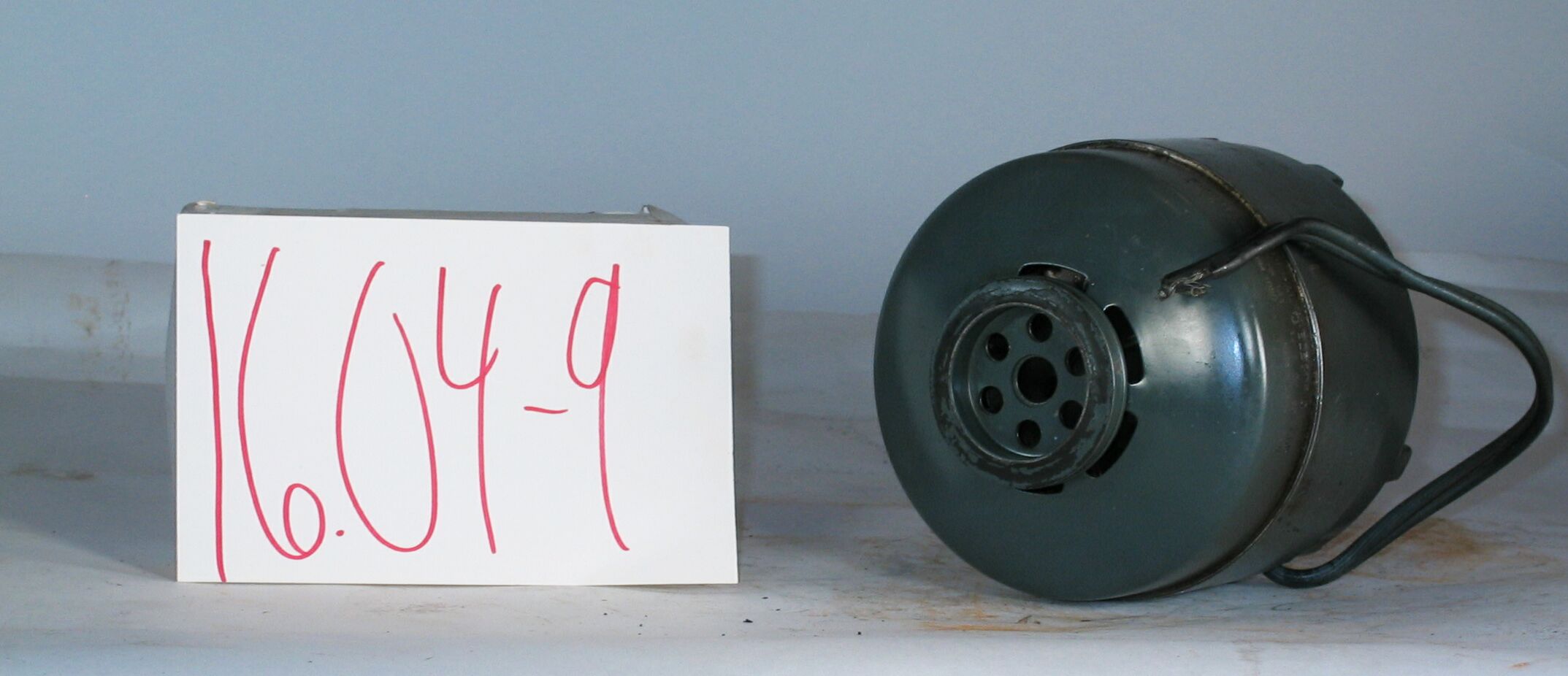16.04-6: Delco 1964 Shaded Pole Induction Motor
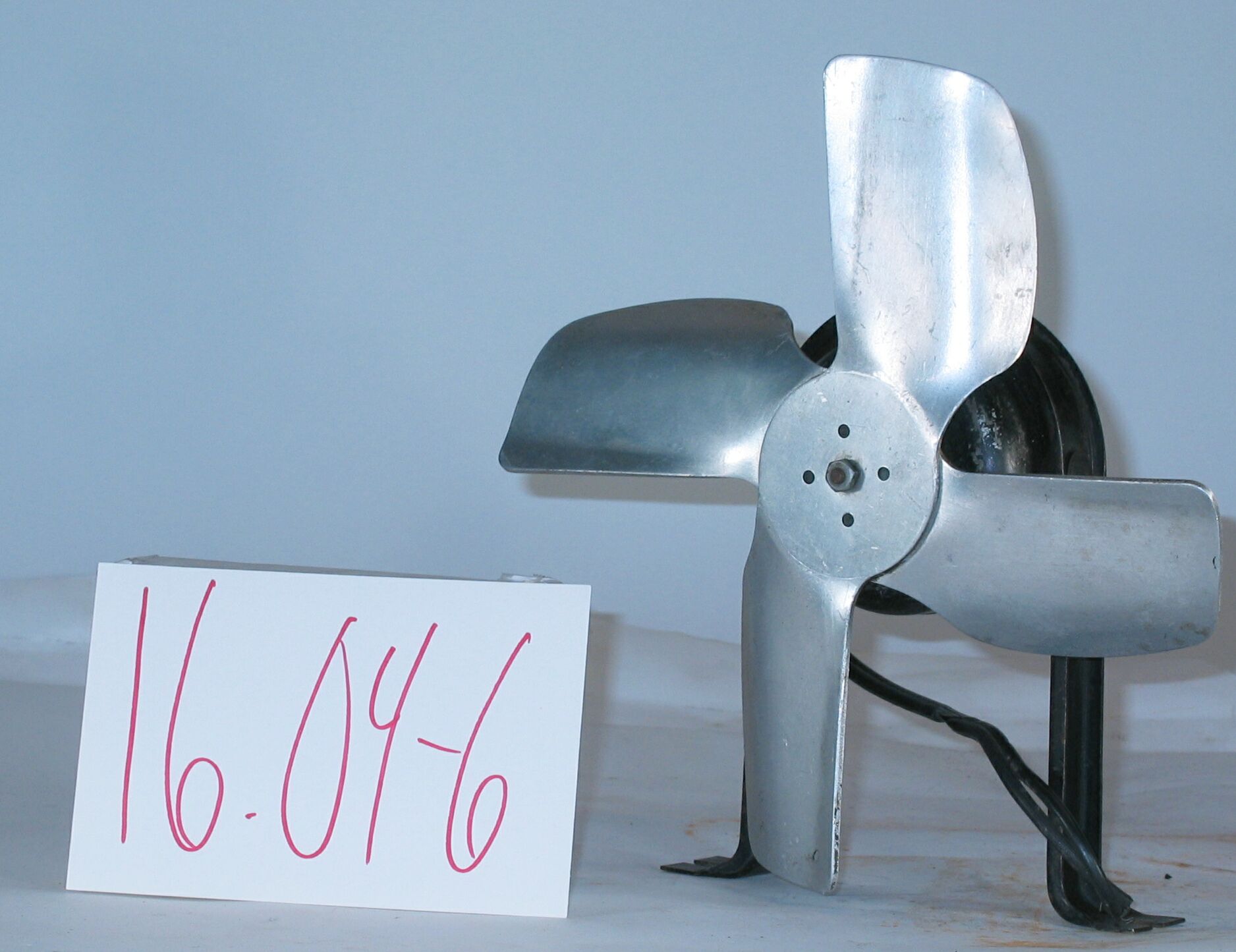
| HHCC Accession No. 2006.194 | HHCC Classification Code: 16.04-6 |
|---|
Description:
A mid 20th century, 60 cycle, shaded pole, induction motor, suspended on three point rubber vibration isolating mount, from two legged pedestal, with 10 inch 4 blade fan, engineered for condenser fan coil applications on hermetic refrigeration units. Used throughout the 1960’s and beyond, it helped to make possible a new generation of quieter more efficient commercial refrigeration equipment and appliances, Delco Circa 1964
Group:
16.04 Electric Motors - Single Phase, Shaded Pole and Universal
Make:
Delco
Manufacturer:
Delco Products, General Motors Corp, Dayton
Model:
A7839, Type SST, Universal No. 506035
Serial No.:
Size:
10 x 4 x 10 ‘ h [with fan]
Weight:
4.5 lbs.
Circa:
1964
Rating:
Exhibit, education, and research quality, illustrating the engineering and construction of a mid 20th century, shaded pole, 60 cycle induction motor, designed for condensing unit application.
Patent Date/Number:
Provenance:
From York County (York Region) Ontario, once a rich agricultural hinterlands, attracting early settlement in the last years of the 18th century. Located on the north slopes of the Oak Ridges Moraine, within 20 miles of Toronto, the County would also attract early ex-urban development, to be come a wealthy market place for the emerging household and consumer technologies of the early and mid 20th century.
This artifact was discovered in the 1950’s in the used stock of T. H. Oliver, Refrigeration and Electric Sales and Service, Aurora, Ontario, an early worker in the field of agricultural, industrial and consumer technology.
Type and Design:
Mid 20th century, classic, shaded pole induction motor, engineered for fan duty on small commercial condensing units. 110 volts, 60 cycle Sealed bearings
Sealed ferro-magnetic one piece body Three point, vibration isolating, mount, Suspended from two legged pedestal
Construction:
Material:
Special Features:
Accessories:
Capacities:
Performance Characteristics:
Operation:
Control and Regulation:
Targeted Market Segment:
Consumer Acceptance:
Merchandising:
Market Price:
Technological Significance:
Representative of a new generation of sleek, compact, more electrically efficient, and customized shaded pole motor technology, for the mid 1960’s. With a totally sealed body and bearings, it was a marker of the now rapidly emerging body of engineering and manufacturing practice, moving to a ‘parts replacement’ culture, from the traditional ‘parts repair’ mode of operation.
The small shaded pole condenser fan motor was a key development in the evolution of the hermetically sealed, commercial refrigeration condensing unit. The refrigeration compressor and drive motor had all of a sudden disappeared, what emerged in its place was a new configuration, with no drive belts, pulleys or drive motor to be seen. The new ‘hermetically sealed’ configuration would be more efficient, quieter, reliable and maintainable. The drive motor was now ‘unobtrusive’ [the motor had disappeared], and ‘inherent’ [part of the compressor], as well as having become ‘embedded’ [in a single envelope} in matters of engineering concept and design. But this new, innovative design concept left behind no compressor motor drive hub on which to mount a fan blade for condenser cooling. Shaded pole motor technology would arrive ‘just-in-time’ to take its place and enable a new future for commercial refrigerated appliances and equipment. By the 1960’s the success of shaded pole motor technology would help move the Canadian commercial refrigeration industry solidly into a new generation of more compact and efficient forced air cooling units, making possible a wide range of new refrigeration appliances and fresh and frozen food merchandizers. The single phase alternating current induction motor has a public face of great simplicity - no commutator, brushes, governor nor switching mechanism to get it started, simply a field winding and solid state [squirrel cage] rotor mounted between two bearings. Its ‘shading pole(s)’ consisting of single turn of wire strategically placed around its pole face(s), is all that is required to start rotation. Yet the shaded pole induction motor is a marvel of early 20th century electrical design engineering. [See Reference No. Chapter XIII, P. 297]
Industrial Significance:
Its low cost and unique speed-torque characteristics made the shaded pole induction motor ideal for small fan applications of 1/20th HP or less. A ‘one-of-a-kind’, ‘just-in-time’ technology, it quickly found a special place in 20th century appliances and electrical equipment, where air circulation and ventilation where imperatives. A highly innovative shaded pole motor application by Delco, this configuration would become a classic of the commercial refrigeration industry, found on many refrigeration manufacture’s condensing units, here marked specifically for Universal Cooler Co.
Socio-economic Significance:
Socio-cultural Significance:
The shaded pole induction motor quickly became an integral, often unobtrusive, component part of the appliances and equipment that increasingly invaded the Canadian home and place of business starting in the early 20th century. Typically custom engineered as component part of a larger piece equipment to ensure air circulation and ventilation, the shaded pole induction motor has enabled much and in so doing has change much of life for Canadians, as an essential part of our 20th and 21st century technological experience. Of equal significance is the ‘shaded pole synchronous motor’, which made possible the electric clock and a multitude of automatic time controlled devices throughout the 20th century [see for example Group 12.08 and 12.10 control devices]
Donor:
G. Leslie Oliver, The T. H. Oliver HVACR Collection
HHCC Storage Location:
Tracking:
Bibliographic References:
‘Fractional Horsepower Electric Motors’, Cyril Veinott, McGraw Hill New York, 1948, Chapter XIII, P.297 ‘Rewinding Small Motors’, Daniel Braymer and C.C. Roe, McGraw Hill, 1932 ‘A course in Electrical Engineering, Volume II, Alternating Current’, Chester Dawes, McGraw Hill, 1934, Starting single Phase Induction Motors, P. 362. ‘The Fractional Horsepower Motor and its Impact on Canadian Society and Culture’, G. Leslie Oliver, Material History Review, Vol. 43, Journal National Museum of Science and Technology, 1996.


